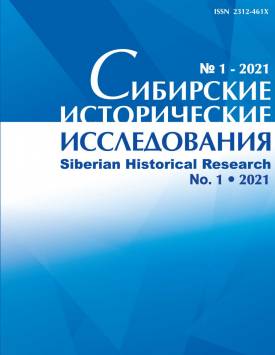Polish history textbooks: Constructing the image of Siberia Shevchenko V.S. Quasi-formal interaction in an educational setting
The article discusses the narratives about Siberia contained in Polish history textbooks and the image of the region created by them. The author analyzes the total of 46 textbooks used in Polish gymnasiums and lyceums from 2008 to 2017. Purposeful image construction in the general public's discourse has been a popular research topic over the last twenty years, but so far there have been no attempts to deal with it in the specific context presented in the article. The discourse of the Polish history textbooks is further compared with the image of Russian territories beyond the Urals which is found in some literary works that Polish schoolchildren have to study. The content analysis and discourse analysis of the textbooks conducted by the author have allowed him to suggest a comprehensive model reflecting the image of Siberia as constructed by the educational materials intended for students of Polish gymnasiums and lyceums. The text analysis has revealed a predominantly neutral tone of the description of Siberia and no negative connotations. Overall, the study confirms the author's initial hypothesis that Siberia is an integral part of the historical discourse contained in the Polish history textbooks. Moreover, thanks to the quantitative analysis of the texts, the main topics, within which Siberia is specifically mentioned, have been identified. Finally, particularly noteworthy is the fact that many references to Siberia as given in the textbooks go beyond the widely spread representation of Siberia as a place of exile.
Keywords
image, Siberia, textbooks, history, Poland, narrativeAuthors
| Name | Organization | |
| Boridczenko Stanisław E. | University of Szczecin | esani-us@gmail.com |
References

Polish history textbooks: Constructing the image of Siberia Shevchenko V.S. Quasi-formal interaction in an educational setting | Sibirskie Istoricheskie Issledovaniia – Siberian Historical Research. 2021. № 1. DOI: 10.17223/2312461X/31/8
